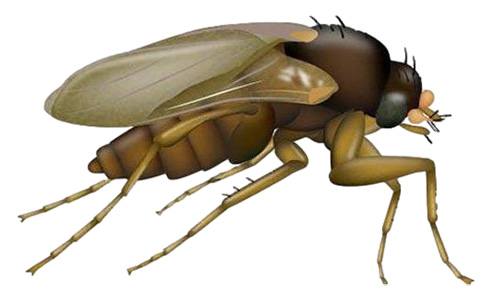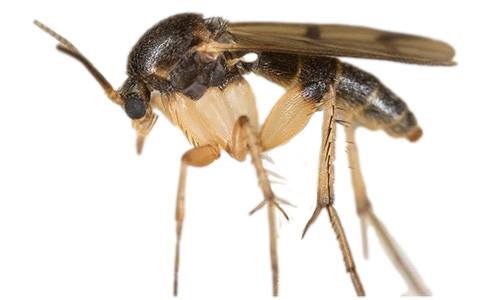
Small Flies in Your House
Many small flies are found in food prep areas and may carry disease-causing organisms. The six species listed below are the most common of the small fly.
April 24, 2024
Types of Small Flies
There are 6 common species of small household flies:
- Fruit flies
- Phorid flies
- Moth flies
- Sphaerocerid flies
- Fungus gnats
- Cheese skippers
Inspection & Breeding Sites for Small Flies
Breeding Sites
These small flies may be found breeding in moist organic matter, such places as soil contaminated with sewage or drains, decaying fruit or vegetables, and garbage. Sphaerocerid flies are also located in manure; cheese skippers breed in meat, cheese, and animal carcasses; and fungus gnats can feed on fungus growing in wet soil.
Where to Inspect
- Moist organic matter
- Decaying plant/vegetable/fruit matter
- Dumpsters, compactors, trash cans
- Where equipment legs meet the floor
- Discarded fruit cans or soda cans and recycle bins.
- Drains
- Elevator pits
- Under refrigerators in the condensation pan
- Terrariums, soil in potted plants-particularly for the small fly called a fungus gnat. Please read more on fungus gnats from this link to obtain better control.
- Mop buckets, mops
- Cadavers
- Grease or food trapped in cracks of equipment
- Leaks in or around cabinets that cause wood to stay moist.
- Wet insulation in walls and ceilings.
Types of Small Flies
Get Rid of Small Flies
The best method for eliminating a small fly infestation is to remove all breeding sites from your home/property. After you haven taken care of the potential breeding sites, here are some additional tips to take care of the remaining small flies:
- Use an industrial-strength drain cleaner like Invade Bio Drain Treatment to break up organic debris.
- Dry the soil and cover it with a 2" layer of sand to prevent future breeding.
- For Phorid Fly issues, replace sewage-infested soil with fresh soil.
- Clean and caulk cracks between floors and equipment, and dry out moist areas to eliminate larvae habitats.
- Store meats and cheese between 30-36 degrees F. Cheese Skippers can't infest properly stored meat and cheese.
- After removing breeding sites, use Stryker 54 Aerosol for immediate contact kill of adult insects.
- For longer control, apply Doxem NXT—a broad-spectrum aerosol that combines insecticides and growth regulators, effective up to 180 days, as a crack and crevice or spot treatment.
- Use pyrethrins and professional fogging equipment and materials.
- Use fly light traps to attract fruit flies, male phorid flies, moth flies, and fungus gnats.
Preventing Small Flies
Here at the most effective strategies for preventing small flies from becoming a problem ever again:
- Keep sinks and garbage disposals clean.
- Empty trash cans often.
- Check for debris in the refrigerator condensation pan.
- Keep fruits and vegetables covered and washed well if stored on countertops.
- Keep vegetables and fruits in the refrigerator to slow down the ripening.
End Small Fly Infestations with DIY Pest Control
Explore our range of products tailored specifically for combating small flies in your home. From natural solutions to advanced chemical treatments, we offer effective, easy-to-use options to help you maintain a fly-free environment. Shop now to find the perfect solution for your pest control needs and ensure your home stays comfortable and clean.
Shop Fly Control ProductsSmall Flies
Types of Tiny Flies (Small Flies) & How to Get Rid of Them
Many small flies are found in food prep areas and may carry disease-causing organisms. The six species listed below are the most common of the small fly.
Small Flies-Fruit Fly, Phorid Fly, Moth Fly, Sphaerocerid Fly, Fungus Gnats and Cheese Skippers
Many small flies(1/4") are found in food prep areas and may carry disease-causing organisms. The six fly species listed below are the most common of small flies.
Inspection and Breeding Sites for Small Flies
Breeding Sites
These small flies may be found breeding in the moist organic matter, such places as soil contaminated with sewage or drains, decaying fruit or vegetables, and garbage. Sphaerocerid flies are also located in manure; cheese skippers breed in meat, cheese, and animal carcasses; and fungus gnats can feed on fungus growing in wet soil.
Where To Inspect
- Moist organic matter
- Decaying plant/vegetable/fruit matter
- Dumpsters, compactors, trash cans
- Where equipment legs meet the floor
- Discarded fruit cans or soda cans and recycle bins.
- Drains
- Elevator pits
- Under refrigerators in the condensation pan
- Terrariums, soil in potted plants-particularly for the small fly called a fungus gnat. Please read more on fungus gnats from this link to obtain better control.
- Mop buckets, mops
- Cadavers
- Grease or food trapped in cracks of equipment
- Leaks in or around cabinets that cause wood to stay moist.
- Wet insulation in walls and ceilings.
Different Types Of Small Flies
Get Rid Of Small Flies
- Removing all breeding sites is the best method for eliminating a small fly infestation.
- Unfortunately, bleach and hot water will not eliminate breeding sites in drains for the drain fly. Drains need to be treated with an industrial-strength drain cleaner such as Invade Bio Drain Treatment. It may be used to break up the organic debris.
- Dry the soil out. Placing a 2" layer of sand over the dried soil will help prevent future breeding areas in the soil.
- Remove sewage infested soil and replace with new soil if you have a Phorid Fly problem.
- Clean and caulk cracks between floor and equipment. Remember to dry out moist areas because larvae need a moist area to survive.
- Store meats and cheese between 30-36 degrees F. Cheese Skippers can't infest properly stored meat and cheese.
- After removal of breeding sites, a non-residual pryethrin spray space spray Stryker 54 Aerosol Contact Insect Spray can be used as a contact kill (non-residual), reducing populations of flying adult insects. A broad-spectrum aerosol, called Doxem NXT combines insect growth regulators and insecticides in one formulation to both kill adults and delay population growth. It lasts up to 180 days. Use Doxem NXT as a crack and crevice/spot application.
- Fogging material(pyrethrins) and professional fogger equipment: Fogging Equipment and Fogging Material
- Fly Light Traps can also be used to attract fruit flies, phorid flies(males only), moth flies, and fungus gnats.
Prevent Small Flies
- Keep sinks and garbage disposals clean.
- Empty trash cans often.
- Check for debris in the refrigerator condensation pan.
- Keep fruits and vegetables covered and washed well if stored on countertops.
- Keep vegetables and fruits in the refrigerator to slow down the ripening.





 Fruit Flies
Fruit Flies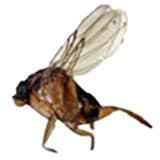 Phorid Flies
Phorid Flies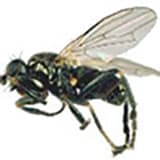 Sphaerocerid Flies
Sphaerocerid Flies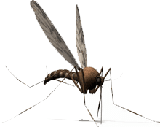 Fungus Gnats
Fungus Gnats Drain Flies
Drain Flies Cheese Skippers
Cheese Skippers

